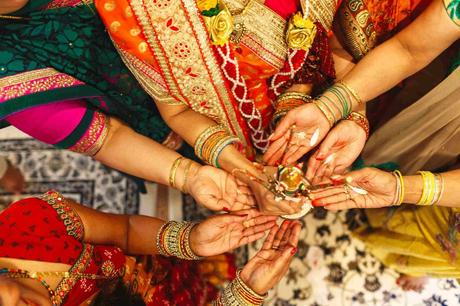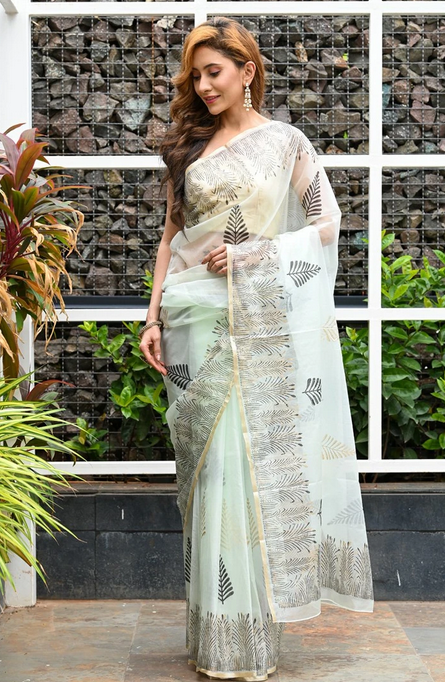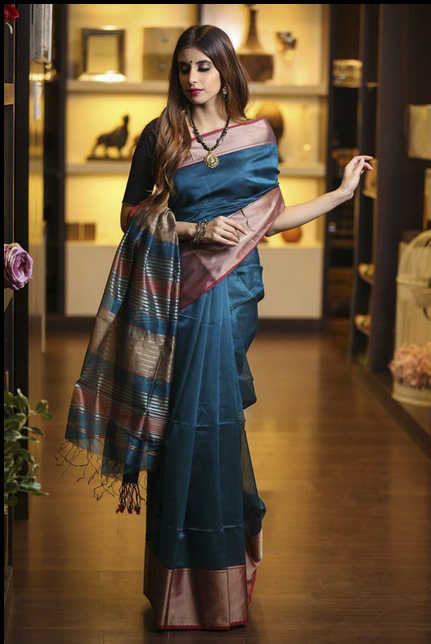Saree is a mark of Indian Culture and Tradition. It is easy to recognize the ethnicity of an Indian woman just by the unique and elegant attire that she wears.
Sarees have been a part of the Indian culture for a historical amount of time. Today there are so many different options for buying a saree, be it online or at a store and each segregated by the type of fabric, weave, artistic design etc.
Cotton sarees, Linen Sarees, Silk Sarees, Brocade sarees and Jamdani Saree online shopping can be facilitated to any part of India thanks to websites that offer delivery services. Infact, sarees are very popular amongst Europeans and Americans as well and many of these online shopping sites even ship abroad.
This has in turn boosted the handicraft and weaving businesses in India and the popularity of sarees overall.

Classic Indian Sarees
There are many kinds of sarees in India and these are categorised using following scales
- Weave of the Material
The weave of each kind of saree is different and this difference is attributed to the fabric and the artisans work on it. Some sarees are hand weaves which is a major handicraft industry in India. Some are weaved on a small machine that is manually operated by weaver such as silk sarees.
- Artistic Quality
Each state in India has their unique style of saree bearing a unique quality, a mark of the artisans trademark style which is passed over through generations and popularised as a cultural mark of that state. Some examples are the golden silk jari in Kanjeevaram Saree of Tamilnadu, the Crisp designs on Cotton in the Pochampally saree of Andhra Pradesh, the flower motifs handcrafted on the Phulkari Saree of Punjab etc. In these sarees, each one has different workmanship that makes these sarees regionally significant and unique.
- Type of Fabric
Sarees are widely segregated on the basis of the material used. These mainly are chosen based on the weather, the type of occasion as well as the cultural representation of that particular place. Some most commonly used saree fabrics are Cotton, Silk, Linen, Jute, Raw Silk, Muslin, Chiffon, Georgette and Velvet.
- Origin of Design/Weave
Many sarees have originated from a particular region of India due to the kind of fabric availability, the seasonal influence, the religious significance and the age old tradition that is followed in these places. These give birth to a specific design for the kind of saree the women wear in this region. For example, you can see Kerala women wearing a cotton kasavu saree due to the hot weather and the ease of handling a cotton saree in that weather.
- Length of the Saree (6yards to 9 yards)
In the olden times, women used to drape 9yards of sarees which were extended to use as a cover for the head as a sign of respect in those times. Even today some cultures follow this such as the Brahmins who wear their 9yards draped in a religious form. In Some cultures, the bride uses these longer sarees to cover their faces during a wedding. In modern India, the 6 yards is more suited and common for use.
Popular India Sarees
Kanjeevaram Silk Sarees, Tamilnadu
The most popular Indian saree perhaps, Kanjeevaram depicts Indian Temples and ancient history on their weaves. They are usually handcrafted by weavers in the Kanjeevaram town of Tamil Nadu.
Jamdani Sarees of West Bengal
Influence of the Bengal Tradition from ancient Bangladesh and Dhaka can be seen in this type of saree. Jamdani Sarees are elegant Cotton based sarees very popular in the Eastern parts of India. Jamdani Sarees Online Shopping trend has recently increased among youngsters in India.
Kalamkari Sarees, Rajasthan
Inspired by hindu mythology and depicting kings and queens and palaces, this is a popular cotton saree handcrafted in Rajasthan and is fast becoming a popular choice among women from all parts of India
Chikankari Sarees, Lucknow
Lucknow based Nawabs popularly endorsed the Chikankari Weave, with its intricate hand embroidered designs on muslin. It is one of the most delicate weaves and requires years of training. Chikankari is popular all over the world because of its posh and elegant appeal.
Muga Silk Sarees, Assam
One of the rarest kinds of silk, Muga silk sarees are obtained by a special kind of silkworms which make these sarees rare and expensive. Muga silk has ultimate lasting quality and has a brilliant sheen and softness.
Saree is a jewel to a woman and enhances the beauty of the wearer. Add these brilliant masterpieces to your wardrobe and be the star of the evening every time.



